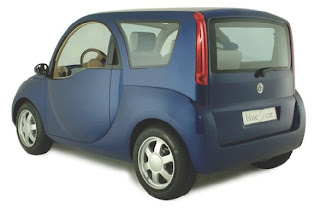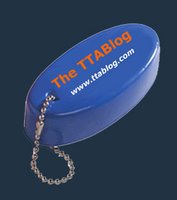TTABlog Quarterly Index: April - June 2010
E-mail subscriptions to the TTABlog are available. Just enter your e-mail address in the box on the right to receive a daily update via Feedblitz. You may also follow the blog on Twitter (here). And don't forget to leave your comments! Finally, please report any broken or inoperative links, as well as any errors and omissions, to the TTABlogger at jwelch at lalaw.com.

Section 2(a) - deceptiveness:
- Finding "ORGANIC ASPIRIN" Deceptively Misdescriptive of and Deceptive for Dietary Supplements, TTAB Sustains Bayer Opposition
- "ILEX" Not Deceptive or Deceptively Misdescriptive for Medicated Skin Paste, Says TTAB
Section 2(d) - likelihood of confusion:
- Precedential No. 23: Finding Third-Party Registrations Not Probative, TTAB Reverses 2(d) Refusal
- TTAB Reverses 2(d) Refusal As Waste of Everyone's Time
- Test Your TTAB Judge-Ability: Are These Two Marks Confusingly Similar?
- Fame of Coach's "Signature C" Design Mark Leads TTAB to Sustain 2(d) Opposition
- In Stinging Reversal, TTAB Finds "SOLIGA FOREST HONEY" Not Confusingly Similer to "FOREST HONEY" Design Mark
- Finding "BORN=OFFICIAL & Design" and "BØRN" Too Dissimilar, TTAB Dismisses 2(d) Opposition
- TTAB Reverses 2(d) Refusal, Finds "AQ" and "PARADISE MAKEUP AQ" Not Confusingly Similar for Cosmetics
- TTAB Finds "SMIC" And "TSMC" Wafer Grid Logos Confusingly Similar for Identical Goods and Services
- TTAB Reverses 2(d) Refusal, Finds "PANTECH BREEZE" and "BREEZE ACCESS" Too Different for Wireless Products
- WYHA? TTAB Finds "THE ORIGINAL CHUBBYS MEXICAN FOOD" and "EL CHUBBY'S" Confusingly Similar for Restaurant Services
- Test Your TTAB Judge-Ability: Are "ARTEHOUSE" and "ART HOUSE GREETINGS" Confusingly Similar for Greeting Cards?
- Precedential No.13: Divided TTAB Panel Dismisses "VIGILANZ" Opposition, Finding Purchasers Sophisticated and Goods Not Related
- WYHA? TTAB Affirms 2(d) Refusal of "USWEAR" for Boys Clothing Over "US WEAR" for Adult's Clothing
- Real World Aside, TTAB Affirms 2(d) Refusal of "CARRERA" for Welding Helmets
- Test Your TTAB Judge-Ability: Are Condoms and Vibrators Related for 2(d) Purposes?
- Finding Transportation of Natural Gas Related to Freight Forwarding, TTAB Affirms 2(d) Refusal of "CGL"
- Test Your TTAB Judge-Ability: Is "EMIDIO TUCCI" Confusingly Similar to "EMILIO PUCCI" for Overlapping Goods?
- Sophistication of Purchasers Leads to TTAB Reversal of 2(d) Refusal of "TITAN" for Commercial Coffee Brewers
- Finding Clothing and Fountain Pens Related, TTAB Sustains "Le TIGRE" 2(d) Opposition

Section 2(e)(1) - mere descriptiveness:
- Test Your TTAB Judge-Ability: Is "LEMONADE" Merely Descriptive of Restaurant Services?
- Test Your TTAB Judgeability: Is "BLUECAR" Merely Descriptive of Electric Vehicles?
- Test Your TTAB Judge-Ability: Is This Mark, With Disclaimer, Stylized Enough for the Principal Register?
- SEARCH ENGINE OPTIMIZATION" Merely Descriptive of Marketing Services, Says TTAB
- Test Your TTAB Judge-Ability on this Section 2(e)(1) Mere Descriptiveness Refusal of "CLUB DANCE" for Restaurant and Bar Services.
Section 2(e)(1) - deceptive misdescriptiveness:
- Finding "ORGANIC ASPIRIN" Deceptively Misdescriptive of and Deceptive for Dietary Supplements, TTAB Sustains Bayer Opposition
- "ILEX" Not Deceptive or Deceptively Misdescriptive for Medicated Skin Paste, Says TTAB
Section 2(e)(4) - Primarily merely a surname:
Bona Fide Intent:
Dilution:
- Precedential No. 21: TTAB Sustains Dilution Claim For the First Time in Seven Years
- Precedential No. 14: Noncommercial Use Defense to a Dilution Claim Unavailable in a TTAB Proceeding
Fraud:
- Fraud and Lack of Bona Fide Intent: Some Thoughts on Remedies
- Precedential No. 16: Fraud Claim Survives Motion to Dismiss; Facts Pleaded with Sufficient Particularity
- Another TTABlogger Article: "Fraud and the TTAB: What Hath Bose Wrought?"
- TTABlogger Article: "TTAB developments: Bose and beyond"
- CAFC Turns Its Attention From Trademark Fraud to Patent Inequitable Conduct
Genericness:
- TTAB Finds "THREE-STRAND FLOSS" Generic for ... Guess What?
- TTAB Finds "FULLY COOKED" Generic for ... Guess What?
- TTAB Finds "ToeSox" Generic for ... Guess What?
Lack of Bona Fide Intent:
- Fraud and Lack of Bona Fide Intent: Some Thoughts on Remedies
- Finding Lack of Bona Fide Intent, TTAB Sustains "MIDDLE EARTH JEWELRY" Oppositions
Use in Commerce/Drawing/Specimen of Use:
- TTAB Affirms Rejection of Catalogue Specimen for "CELLAR 360" for Wine
- Test Your TTAB Judgeability: Do You Know Trademark Mutilation When You See It?
- Precedential No. 18: TTAB Affirms Rejection of Trademark Specimen as Mere Advertising and not Point-of-Sale Display
- TTAB Cancels "CITYSTAY HOTELS" Registration as Void Ab Initio: Hotel Lodging Services Not Rendered as of Filing Date
- SEARCH ENGINE OPTIMIZATION" Merely Descriptive of Marketing Services, Says TTAB
- Test Your TTAB Judge-Ability on this Rejected Amendment and Specimen of Use
- Precedential No. 15: TTAB Affirms Rejection of Website Specimen for Goods, Ordering Information Lacking
- Test Your TTAB Judge-Ability on This Specimen of Use Question
TTAB Discovery/Evidence/Procedure:
- Precedential No. 24: TTAB Says Reference to Documents (in Russian) Does Not Satisfy FRCP 33(d)
- Precedential No. 20: Per Rule 2.107(b), TTAB Denies Motion to Amend Madrid Opposition
- Precedential No. 19: TTAB Snoringly Rules on Motions to Compel Production and to Exclude Trial Witness
- Precedential No. 17: TTAB Says Section 18 Not Available for Requiring Disclaimer of Generic Part of Mark Registered for More Than 5 Years
- TTAB Vacates "WAL-VERT" Decision Per District Court Order
- TTAB Resumes Proceedings in Oldest Pending Case

CAFC Decisions:
- CAFC Reverses TTAB's "FRED" Ruling: Fee Not Needed With Motion for Leave to Amend Cancellation Petition to Add Classes
- CAFC Affirms TTAB Ruling in "ML" Skin Care Products Case
CAFC Oral Arguments:
- CAFC Affirms TTAB's "CRASH DUMMIES" No Abandonment Decision
- CAFC Hears Oral Argument In Fred Beverages Fee Payment Case
Recommended Reading:
- Daniel Kegan: "The grammar of intellectual property: Copyright is a noun, trademark is an adjective"
- Recommended Reading: "A Comparative Empirical Analysis of Online Versus Mall and Phone Methodologies for Trademark Surveys"
- Recommended Reading: "Bona Fide Intent to Use in the United States and Canada"
- TTABlog Recommended Reading: Ted Davis on Recent Developments in Trademark and Unfair Competition Law
Other:
- TTAB Posts June 2010 Hearing Schedule
- USPTO Seeks Comments on Proposed Revision of Madrid Protocol
- TTABlogger Article: "TTAB developments: Bose and beyond"
- Summary of TPAC May 7th Public Meeting
- Trademark Public Advisory Committee (TPAC) Webcast Tomorrow
- TTAB Posts May 2010 Hearing Schedule
- Transcript of February 2010 TPAC Meeting Now Available
- Reminder: "TTAB Comes to Boston" - April 9th at Boston University School of Law
- TTABlog Newsflash: Stress Balls Are Smash Hit!
- TTAB Posts April 2010 Hearing Schedule

Text and photos ©John L. Welch 2010.

























